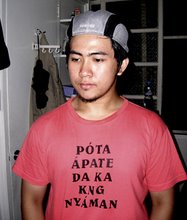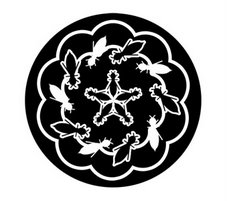 "I feel that Gaelic gives us an identity as a people" Jayne McCleod Teenager Jayne McCleod is bringing the ancient dialect of Scottish Gaelic back into the hearts of local young people, through a combination of radio broadcasts and traditional dance.
"I feel that Gaelic gives us an identity as a people" Jayne McCleod Teenager Jayne McCleod is bringing the ancient dialect of Scottish Gaelic back into the hearts of local young people, through a combination of radio broadcasts and traditional dance.Jayne lives on the Isle of Lewis off the coast of Scotland. In her hometown of Ness, the green rolling hills, the trademark of the Scottish highlands, meet the undulating blue waves of the Atlantic Ocean.
The oldest language spoken in Scotland, Jayne is one of the few people who fully understand Gaelic. She speaks Gaelic at home with her family, especially her grandmother, but not with her friends.
Jayne explains that Gaelic suffers from an image problem amongst the younger generation: "Most young people think Gaelic is old-fashioned so they don't speak it. It's very sad".
Passionate about her language and her heritage, Jayne is working hard to bring Gaelic back into the community. Every Wednesday, as part of her work at the local radio station, Jayne reviews alternative rock and pop CD's in Gaelic.
She hopes that using the language to address subjects that matter to young people, the language will seems relevant and useful to them.
Jayne also believes that Highland dancing is a way of getting young people interested in Gaelic traditions and culture. "When I dance I feel part of where I'm from. It strengthens my bond with the language and culture. Dancing is something that everyone can connect to", says Jayne.
Many Highland dances are connected with ancient Scottish folk customs and history. The 'Old Trousers' for example, came from when the men went to war and were made to wear trousers instead of the traditional kilts.
The dance mimes a Scot shedding his trousers (during the slow, first part of the dance) and returning to his traditional kilts and tartan (during the final, up-tempo fling-like step).
Jayne has been learning dance from the age of 11 and now teaches it to others in the local community arts center. There are about 25 pupils in her weekly dancing class, ranging in age from three to 12 years old. She performs and teaches a variety of dances and, like 'Old Trousers', all of the dances have a story behind them.
Once widespread in both Scotland and Ireland, Gaelic is slowly disappearing and today most Scots speak English. Part of the Celtic language family, it first made its appearance in Scotland around the third century A.D. By the fifth century, coinciding with the end of the Roman occupation of Britain, Gaelic had become the majority language of Scotland.
The spread of Gaelic in Scotland was accelerated by waves of immigration from Ireland, just across the channel. It was for a long time the court language of the Scottish rulers and possesses one of the oldest bodies of literature in Europe.
However, Gaelic saw a decline in the 19th and 20th centuries. Its forced absence from schools and areas of public life meant that it increasingly became disassociated with progress and everyday life.
Jayne is part of wider renaissance of the Gaelic language that is currently taking place. Since the 1980s, there have been numerous steps taken by the British and Scottish governments to preserve and promote the Gaelic language and culture.
Although they are having some effect, as it stands only 1.4 percent of the Scottish population above the age of three can speak, write and understand Gaelic.
Jayne's commitment to Gaelic extends beyond her home and working life, she is also studying for a BA degree in Gaelic language and culture at a college on the Island.
She took the decision to stay and study in Lewis, when most people her age leave the island when they finish school, because she thought that staying would be more beneficial to her, being close to the histories of her family and the language she is studying.
"I haven't traveled much" she admits, "I would like to at some point. But I'm happy here for now".








No comments:
Post a Comment